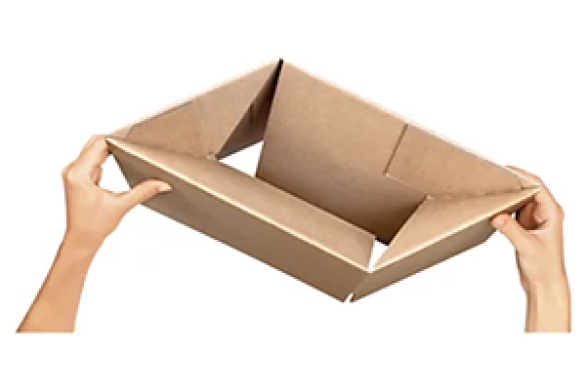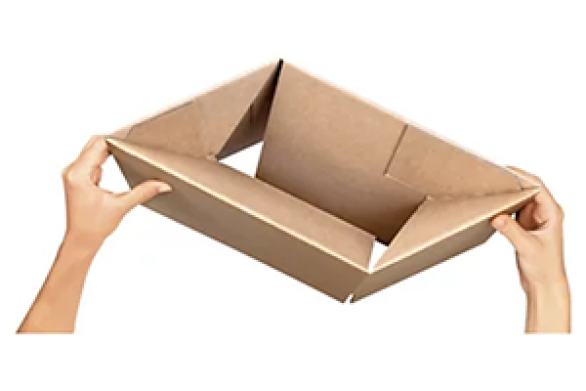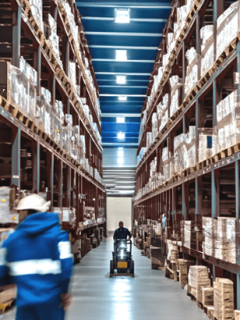The impact of the spread of Covid-19 is hitting the retail sector hard. In particular, the stationary trade with consumer goods is affected. Despite the decision to gradually open shops, no one can foresee how the situation will develop. Will consumer behaviour change permanently, will there perhaps be a change in shopping behaviour even after the pandemic? Will customers want to be able to buy locally both online and offline in the future? No matter what the future brings, stationary retailers must now at the latest deal with how they can also sell online. But what possibilities are there and what needs to be considered?
How can the products be sold online?
An own webshop
…is of course the best choice, as you can design according to your individual wishes and have control in your own hands. Apart from the relatively time-intensive creation, the same applies online as offline: in order to guide buyers into the shop, for example, to be found via search engines and to build up a loyal customer base, time and money are needed above all. A successful online shop has numerous adjusting screws that need to be constantly turned and optimised: the mobile view, fast loading times and search engine optimisation, to name but a few. So if you don’t run your own webshop yet and still want to offer your goods online as quickly as possible, you should look around for alternatives.
.
Online marketplaces
…follow the principle of the stationary marketplaces, i.e. many traders offer their goods on a marketplace. Payment is usually made via a turnover-based commission model. Advantage: The traders share a common infrastructure, which in turn leads to cost advantages. Each individual shop operator uses, for example, a pre-configured shop system that is centrally maintained and serviced in the background. The corresponding administration and payment systems are also provided. Disadvantage: The solutions offer little flexibility and space for own ideas. In addition to the industry giant Amazon, well-known marketplaces include Rakuten and Ebay. A comparison of the largest online marketplaces can be found at Ionos. Ebay is currently offering help with the creation of an account for stationary retailers on the occasion of the Corona pandemic with an immediate help programme and initially does not charge a sales commission.
To the Ebay emergency programme
Comparison of the largest online marketplaces by Ionos
A social media presence
…on Facebook or Instagram is already in place at many retail businesses. Such a profile is quick and easy to set up and opens up many possibilities. During closing time, a Facebook/Instagram profile can act as an advice channel and shop window. Especially if you want to limit yourself to local delivery, this is probably the quickest, easiest and most personal option. Facebook and Instagram currently offer support for small businesses.
To Facebook’s small business grant programme.
How is payment made?
As an online shop newbie, what payment methods can I offer as quickly as possible. Payment by invoice is always possible but also labour and time consuming – every invoice has to be written and printed – as well as a certain risk of non-payment. Paypal is a good alternative with its buyer and seller protection. With regard to payment options, there is also a lot of help for traders who now want to sell online. The payment service provider Wirecard, for example, has launched the Innovation for Now platform together with Futur/io, in which companies such as SAP participate. The aim is to make the offers of all major companies more easily accessible for merchants affected by the current crisis. The payment service provider Heidelpay, for example, offers various payment solutions for local retailers under the hashtag #heidelpayhilft as well as marketplace offers for cities and municipalities, which can use them to make it easier for their local retailers, restaurants and cultural institutions to get online. The payment service provider Wirecard has also put together a help package with digital payment solutions for merchants: for example, all European merchants can use the e-mail-based payment solution “Pay by Link” free of charge.
How does the product get to the customer?
Necessity is the mother of invention. There are now many local initiatives that offer regional delivery services, be it by bike courier, pick-up or personal delivery, which we have already looked at in more detail here. But the “classic” delivery by parcel service is also an option that allows delivery beyond the local border.
Regardless of which delivery option is chosen, the packaging is the essential component to ensure that the product reaches the customer undamaged.
What should be paid attention to in the packaging?
Smaller retailers in particular usually have little or no storage facilities to store a large number of packaging materials. What they need to start with are space-saving, flexible and quick-to-use packaging solutions that are also inexpensive. RAJA has compiled its own product range on one page especially for e-commerce.
The following points should be considered when choosing packaging:
Thinking about returns in advance
Even those who order online may want to return their goods. Some customers may wait until the outgoing goods restrictions are relaxed again, others may want to return the product directly. As a general rule, define return policies for orders in advance and specify whether, for example, return periods will be extended in view of the exceptional situation. Resealable boxes or shipping bags are packaging that is also suitable for return shipping. On the one hand, they facilitate returns and thus lead to a positive shopping experience for the customer; on the other hand, multiple use limits the consumption of raw materials, a plus for the environment.
Reduce postage costs
Would you like to
order boxes? At the moment, packaging that fits into standard post boxes is ideal. Because no matter what form of delivery and delivery is chosen, contactless delivery is also the order of the day for the various delivery services, couriers and shipping service providers.
Cardboard boxes for the letterbox save postage and do not have to be handed over personally, as they fit into any standard letterbox. Padded mailing bags, book packaging or plastic mailing bags for textiles also fulfil these criteria, depending on their size.
Space- and time-saving packaging solutions
Height-adjustable boxes, for example, can be easily adjusted depending on the filling quantity and can therefore be used flexibly for different products. Cartons with an automatic base are also quick to assemble and easy to handle. Packaging with adhesive closures is also easy and quick to handle and additional sealing material can be saved. If you deliver yourself, reusable boxes are a good option. The products can be attractively packed in the paper bags you may already have and then stowed in the boxes for transport. A safe and environmentally friendly packaging for the local supply chain
.
Protect products
During transport, a package has to withstand a lot. Filling and cushioning material is therefore the be-all and end-all of good packaging. It is by no means the case that a lot helps a lot. The better the packaging and the product fit together, the less filling material is needed. As a rule of thumb, hollow spaces should be avoided at all costs. You can find out what else there is to consider in our blog article on this topic.
Communication and customer experience are more important than ever
Especially now, it is important to convey some normality and joy to customers, for example through small attentions, but also through open and accommodating communication. Many consumers want to see how a company deals with such a crisis. A positive customer experience in these difficult times, can have a positive effect on customer loyalty, also according to Covid-19. Add personal messages or small attentions to the packages or develop a loyalty programme to thank customers who continue to buy from them. In these times, communication with customers is more important than ever. Transparency and honesty are the focus. Customers can be kept up to date via social media channels or by email. Delivery times and any problems that may arise, such as delivery bottlenecks, should be communicated openly and honestly in order to avoid unpleasant surprises or to raise false expectations. Because now more than ever, prevention is better than cure, and not just for health!
















